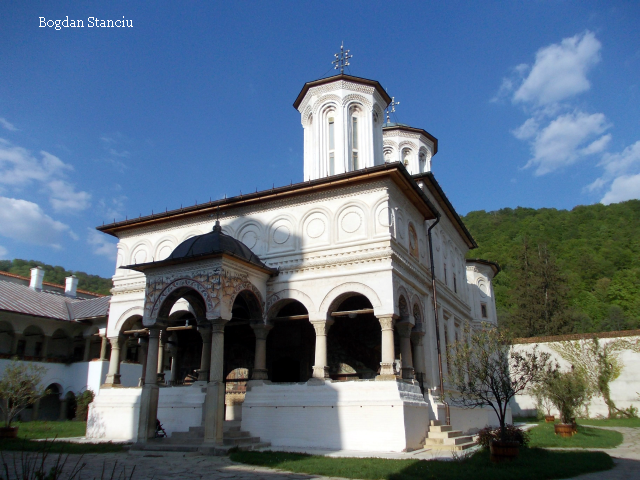The Hurezi Monastery
The Hurezi Monastery, commissioned by Romanian ruler Constantin Brancoveanu in his 2nd year of rule, namely in 1689, is located in the town of Horezu, in the Romanian county of Valcea (south west).

Ștefan Baciu, 22.08.2015, 00:15
The Hurezi Monastery, commissioned by Romanian ruler Constantin Brancoveanu in his 2nd year of rule, namely in 1689, is located in the town of Horezu, in the Romanian county of Valcea (south west). From the very beginning it was conceived as an impressive place of worship, a necropolis for the ruler and his family. Beheaded on the sultan’s order 300 years ago, on August 16th, together with his four sons, for refusing to convert to Islam, Constantin Brancoveanu was canonized by the Romanian Orthodox Church to honour his death as a martyr and the long period of peace, of 25 years, which was instated in Wallachia during his rule. That enabled him to commission many places of worship and palaces and to develop the so-called “Brancoveanu style” inaugurated in Hurezi, his first monastery.
Sister Ecaterina Olteanu, a nun and a guide at the Hurezi Monastery, will next speak about how the monastery was built: “Brancoveanu had a very long rule without conflicts and wars because he was a good Christian and also a fine diplomat. Enjoying a long period of peace, he could attend to many of the country’s problems: economic, cultural and religious. After acceding to the throne, he only fought one fight in Zarnesti, on the territory of the then Transylvania. Afterwards he set the foundation of his first church, the Hurezi Monastery. 4 years before being anointed ruler, he had bought the Hurezi estate, where there were no constructions at all. The estate boasted a large forest, home to a large population of owls, whose singing can be heard even nowadays. “
In order to build the Hurezi Monastery, Brancoveanu had summoned extremely talented craftsmen: painters, bricklayers, masons, and woodcarvers. Their names were recorded in manuscripts, while their portraits are still visible on the church’s walls, thus breaking the medieval tradition, which said the workers must remain unknown. The entire monastery is actually a compound consisting of smaller and bigger buildings, each with its own significance and artistic value.
Here is sister Ecaterina Olteanu with a brief presentation of the premises as they appear to visitors: “After you have entered the gate, first you see the gardens and go up an alley with chestnut trees on either side. Then you go to the second yard, which has a fountain of Hrisant, one of the abbots who added another building to the premises on the Southern side. Then there comes the last yard, where the church is located. But besides those yards, there lies a hermitage on every cardinal point. The one in the South, for instance, is the Village Church. Like all the old monasteries that one has its own infirmary, built by the ruler’s wife. Because there weren’t hospitals at that time, monks and nuns were treated and quarantined here in the infirmary, where they mostly used herbs to cure diseases. All the hermitages can be visited today, but the infirmary isn’t functional anymore.”
But of course, visitors are mostly attracted by the monastery church displaying original decorative motifs at its entrance. Sister Ecaterina Olteanu: “Before entering the church, we have a kind of portico that extends with the narthex, supported by 10 pillars and displaying lavish paintings. The same kind of portico is at Cozia Monastery for instance, which also has paintings in the Brancoveanu style, despite being older. Evidence of that style can be found in other monasteries in the Olt Valley, such as the One Piece of Wood Monastery, Bistrita and Surpatele, founded by Lady Maria, Brancoveany’s wife. The extraordinary architecture of Hurezi Monastery displays local features from Curtea de Arges, such as the two spires, one erected on top of the nave, the other on top of the narthex. Another element of similarity is the floral line dividing the exterior façade in two. The floral line is carved in stone. The window sashes are also carved in stone, while their upper part displays round mouldings that remained unpainted”.
Another element of attraction, this time situated inside the church, is the iconostasis, carved in golden linden wood, reaching almost ten meters in height. Like other places of worship, the paintings there are outstanding.
Ever since its foundation in 1872, Hurezi has been a monastic center, first sheltering monks and today operating as a nunnery. To this day it is the widest and best preserved medieval architecture complex from the former Romanian Principalities, at present a UNESCO World Heritage Site.






























